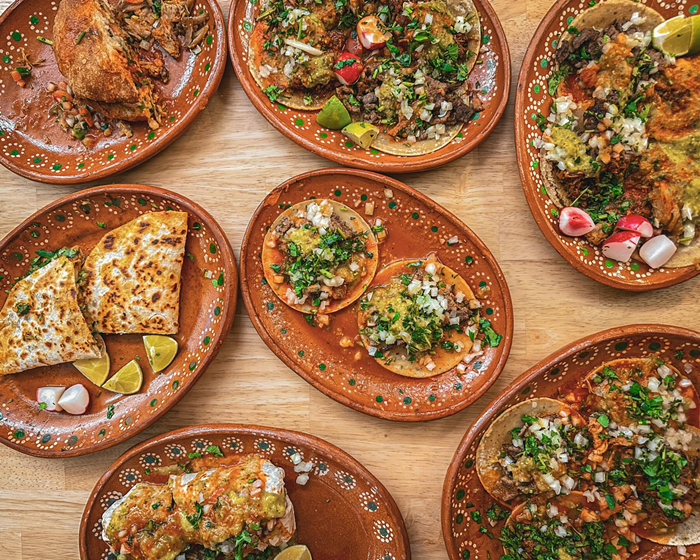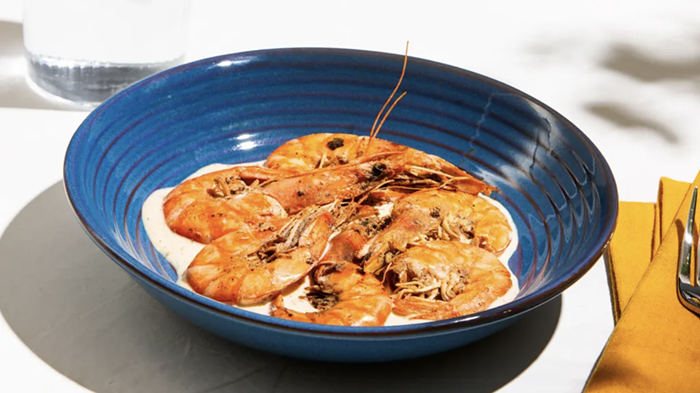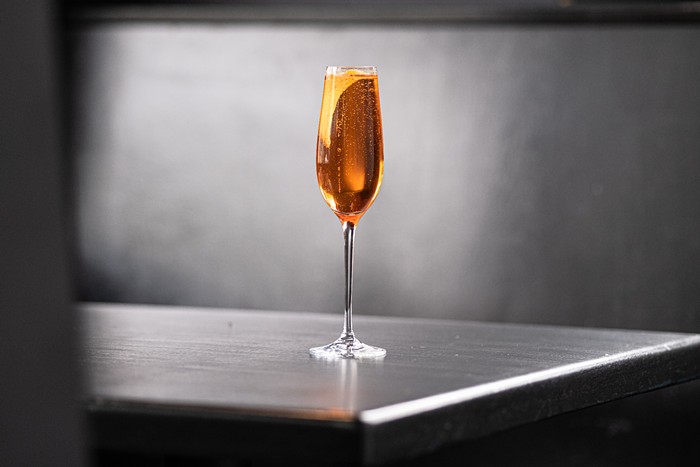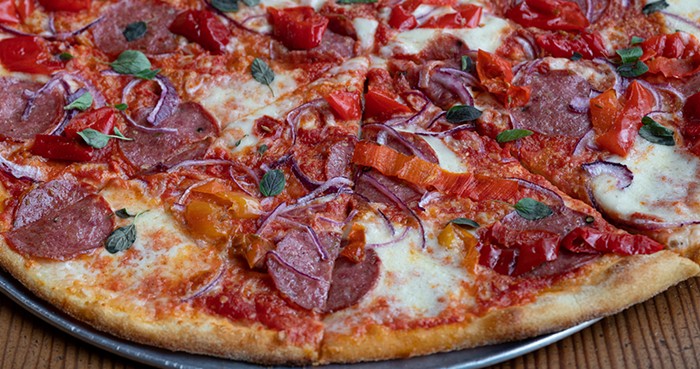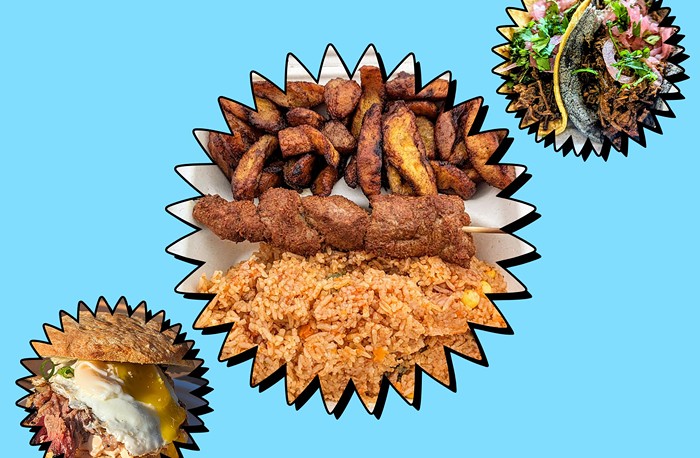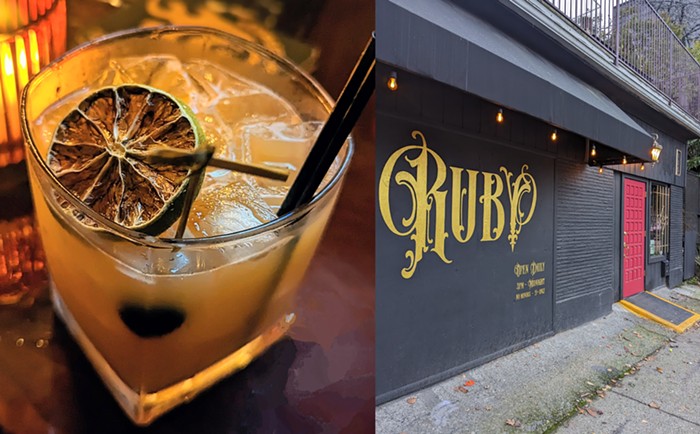"Convivium," explains Chris Joyner as we perch on a stone bench outside his Central District storefront, "derives from 'convivial,' which is an adjective that connotes 'good company.' 'Convivium' is a gathering of good company. And that is what we wanted for CommuniTea."
Chris, the owner of CommuniTea, founded his authentic kombucha brewery in 2008. "When I came, I was the first brewer in the city," he tells me. After leaving behind a past life in Ohio, where he lived and worked on a Quaker community, he says he gravitated toward kombucha as a way to embody and promote values of wellness, community, and environmentalism. An active practitioner of mysticism since the early 1970s, Chris sees his 13-year kombucha business as an ongoing chapter in his journey toward intentional living.
Today, Chris and I are hosting a two-person convivium. We hold mugs of dark, honeyed pu-erh tea in our hands, its leaves sourced from Chris's friend at Floating Leaves in Ballard. Our tea party begins with a discussion of spirituality and the natural world.
Chris and I first connected on this topic a few weeks ago when I stumbled into his brewery on my way home from an interview at Raised Doughnuts. On this particular late-spring morning, Chris tells me about the Findhorn Foundation, an "ecovillage" in Scotland. Members of Findhorn will commune with plant and earth spirits (they call them "the intelligence of nature") to grow gardens of, as Chris explains it, unexpected abundance. In doing so, the ecovillage forms relationships with the conscious ecologies around them.
Conversations like these for Chris and me happen often. We first struck up a friendship talking about synchronicities and authentic selves. We found commonalities in our life stories, despite our age difference. Chris is decades older than me—I'm in my early twenties—yet we both found ourselves hurtling toward new futures. Chris was preparing to relinquish ownership of CommuniTea over to his business partner while I incubated my next chapter as a freelance anthropologist. Our communion at CommuniTea felt like serendipity.
We finish our cups of roasted pu-erh and linger outside in the breezy, pollinated air. Chris gets up first, his frizzy white hair a beacon against the bright morning. I lag behind, breathing in the green smell of spring. We walk together up the concrete ramp and pass through the door to the entryway. Chris opens a second door, and behind it, windchimes swing with music like rain.
We are making kombucha today. The lifecycle of a kombucha batch at CommuniTea involves days of careful brewing, testing, and fermenting. We won't have time to make the beverage start-to-finish for our interview, but Chris will teach me the basics of preparing a batch for fermentation. We'll also check in on batches at their halfway points and bottle a few that are ready.
"We use only Makaibari organic-grown green tea," Chris narrates as he hauls a lumpy sack of it out the door. "I find it gives it the best taste, and it provides antioxidants and polyphenols that are beneficial to the body."
Chris places a bucket down on the landing and pours leaves from the sack into it. Loose tea dust billows up, musty and verdant. He asks me to help grab the bucket. We walk inside, carrying it up the stairs to a scale, where we weigh by the gram.
Kombucha, at its most scientific, is a series of chemical reactions in time. In our case, the proportions of brewed tea, SCOBY ("symbiotic culture of bacteria and yeast"), and sugar must be precisely mixed and measured. By changing these first three variables to different degrees, Chris has a surprising amount of control over the characteristics of his beverage. He can even anticipate the exact levels of taste, sweetness, and effervescence in his yield.
With this level of care, Chris doesn't believe in flavoring his kombucha. "The green tea gives a natural flavor all on its own. So there's no need for anything else. We like to say that this is the 'kombucha-flavored kombucha.'"

Chris and I pour our tea leaves into a cotton-lined belly of a large steel vat, where it will steep for several minutes. He closes the vat's lid, sets a timer, then starts to list the procedures for our next few tasks, which will take place in the small fermentation room.
As we enter the room, punchy whiffs of kombucha attack my nostrils. Jars of kombucha are everywhere, resting at different stages of readiness on wire racks. The air tastes sour-sweet and slightly tannic.
"First, we'll move twenty jars from one shelf to another," Chris outlines. "I can get you gloves for that."
"Second, we'll bring those jars down to this cart. They're ready to be bottled. I'll demonstrate to you how to take the SCOBY out. You'll have to sieve it, and again, I'll show you," he reassures me. "And then you'll roll the jars over to me so I can pour them into the mixing tank."
What Chris means by "mixing tank" is his own peculiar laboratory invention.
The contraption spans across the brewery's two floors. It harnesses the fundamental force of gravity by tinkering together a plastic bin, some industrial tubing, and a stopper or two.
After Chris pours kombucha into the tank and releases a stopper, drink flows downwards through the tubing and into a bottling device, where we can then siphon it into glass bottles.

We move toward the shelves of kombucha. Chris demonstrates how to hoist the jugs in proper form. He bends from his knees, squares his shoulders, and steadies himself as if lifting a kettlebell.
Moving kombucha gives Chris a tender awareness of his body's limits. "This work, and the steps that go into it, is a practice of consciousness for me," he explains.
We begin to move the jars one by one, each with care and solemn intention, like a prayer. After we move all twenty-four jars, Chris hands me latex gloves and shows me how to scoop the SCOBY out from the top.
Jiggly and gelatinous, I pinch the SCOBY in half. It's marbled like a strip of pork belly and feels like one, too. It slips in my hand, and I rapidly scoop it into an empty container, drippings and all. These faithful colonies of bacteria and yeast will be used again and again, each an endlessly reproducing mother to itself.
As we work, Chris's business partner, Tim, comes by to check on us. Tim has mousy brown hair and a beard. He looks like the weed delivery guy in that HBO show, High Maintenance.
Tim used to be a forestry student before he became a kombucha brewer. Like Chris, he is passionate about the science behind kombucha. He takes a refractometer and pipettes a few drops of our batch into its aperture. The gadget gives a measurement that indicates proper levels of sugar content.
The sugar in this batch is low, so Chris adds some more by the gram. Chris and Tim will bottle the beverage and let it sit for a few more days to develop its final flavor.
Chris, Tim, and I pause for a few minutes after finishing our tasks. Chris pours some kombucha for us to try. It's crisp and green, low in sugar, and high in healthy compounds.
As I have another glass, I take in the office space, which is meticulously neat. Its surfaces are clear of clutter; bookshelves hold tidy piles of papers; an Erlenmeyer flask dries in a dish rack. The space feels peaceful.
At CommuniTea, there is a scientific method to brewing a messy, miraculous beverage that is very much alive. Chris and Tim observe and collect data that allows them to decode and "hack" the behavior of symbiotic organisms. By providing intentional conditions for yeast and bacteria to ferment, they cooperate with the "intelligence of nature" to create their desired drink. I like to think of it as chemistry at its most conscious.
But at its simplest, "CommuniTea can be a place where people can share and commune with one another," Chris says. And that, in itself, is enough.
CommuniTea's brewery is located at 21st & Union and sold at groceries around the region. You can now order their bottles through a home delivery program.
